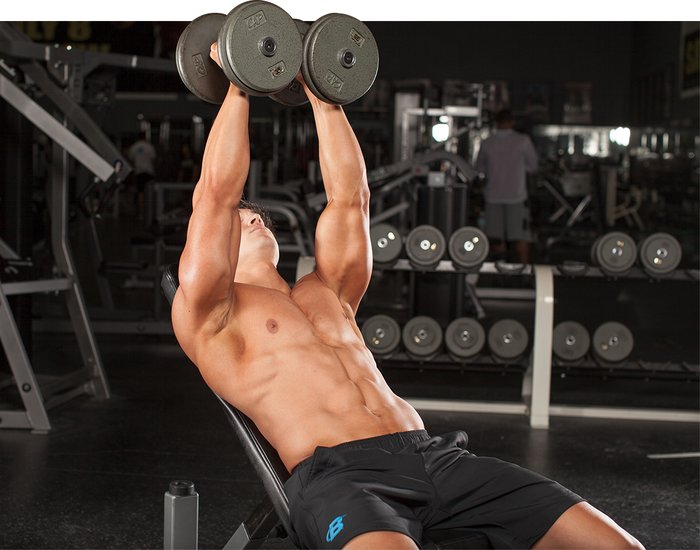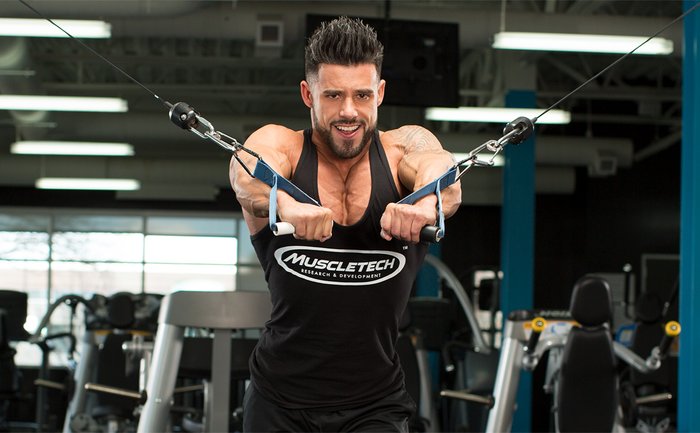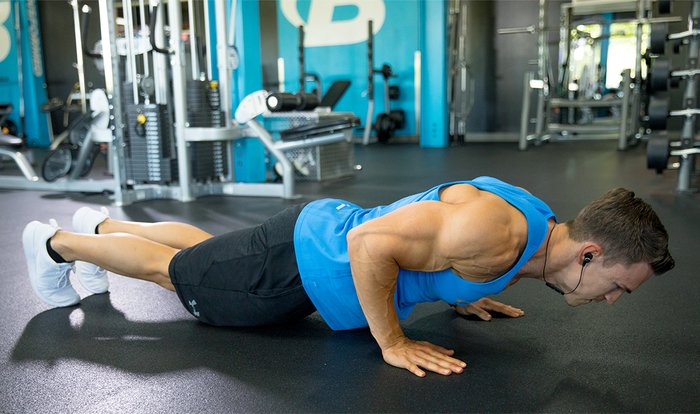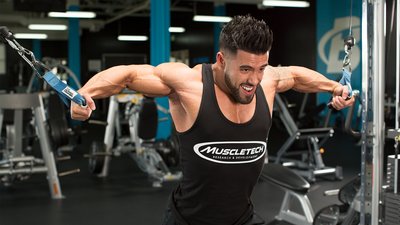Some chest exercises are more popular than others, and you see them performed by practically everyone in your gym. I'm talking bench press, incline dumbbell press, and cable fly. People do them because they work, and they are big exercises that let you move a lot of weight.
But, just because popular exercises are big and flashy doesn't mean you should neglect everything else. Smaller, more focused movements can add some serious size if you know what you're doing. Break out these forgotten gems on your next pec session and be ready to watch your chest grow!
1. High Incline Dumbbell Fly
It's true that the higher the incline is, the more your shoulders will want to join the party. But the incline fly is a great way to target that tricky upper pec—a lagging part for a lot of us.
You have to be careful that you don't use your shoulders and traps on this move. If you've done your homework and trained your pecs to work at those higher incline presses, you should be fine.

Set the bench at 45 degrees, or even a little higher if you think you can handle it. By keeping your shoulders back, you should be able to keep all the work in your chest and blast those upper pecs. Straighten your arms without locking out, and focus on squeezing through each rep. Stay slow and focused. I promise your chest will feel it.
Pro Tip: Use this as a starter move to prepare you for the serious pressing later in the workout. Do 2-3 sets of 10-12 reps apiece.
2. Single-Arm Flat Dumbbell Press
All the big chest moves involve both arms simultaneously, which is what allows you to push a ton of weight. Lifting big saves time and helps you push yourself, but that doesn't mean you should skip out on isolateral moves completely.
If you never do single-arm exercises, you're missing out on some serious pec-building potential. Isolating each arm forces the muscles on each side to work on their own, which can help you improve balance and symmetry. Furthermore, you can improve core strength and overall power by forcing one side to work while maintaining a solid base.
Pro Tip: Go light on these and focus on form until you're certain you can blast your chest effectively. Do 3-4 sets of 8-10 reps apiece.

3. Isometric Cable Iron Cross
You've done cable cross-overs ad nauseam, but have you ever held that contraction for a long period of time? Like, until you physically can't hold it anymore?

Long isometric holds fire up your pecs, especially with the cables. Maintaining that contraction will test you, so hold out as long as you can until you have to let them go. Just try to control the weight when you do, and don't let the stacks drop. Your gym staff might not like that.
Pro Tip: Perform the cable cross-overs like you normally would. Once you finish your set, release the handles, count to five, then perform the iron cross for as long as you can. Three rounds of this will be all you can handle.
4. Push-up
Everyone has done push-ups to build their chest. But here's the million-dollar question: Do you do them now?
Many lifters feel the push-up is too basic for them and they skip it—which is a huge mistake. Push-ups may be the most basic upper-body movement in the game, but they remain one of the most effective. There's a reason why every fitness test uses push-ups: They are a killer finisher for anyone, regardless of how long you've been lifting or how much weight you can bench.

Putting push-ups back in your chest routine almost guarantees added size and strength to your upper body.
Pro Tip: Here's a killer dropset finisher for you. Start doing push-ups with your feet elevated. Once you reach failure, bring your feet down and do normal push-ups. When you don't have any more in you, put your knees on the floor and try to get a few more. Finally, stand up, lean against a bench, and go until you can't go anymore.


